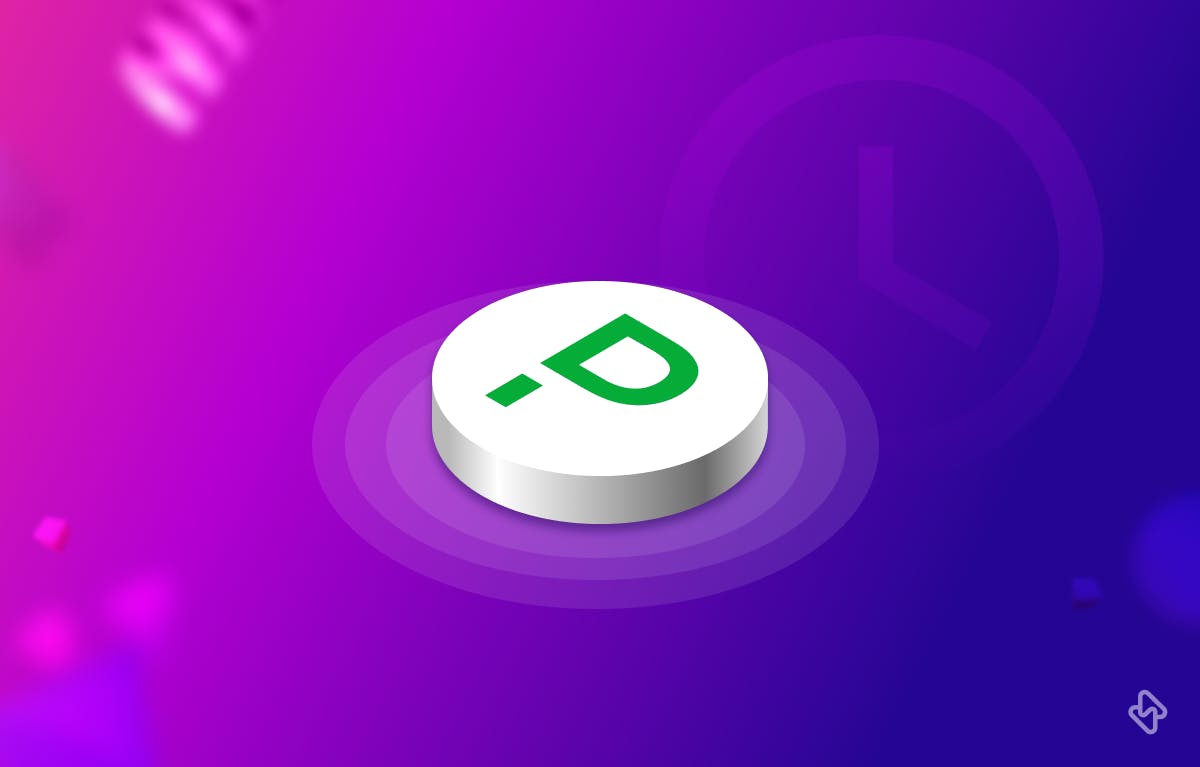In today's fast-paced digital world, it's more important than ever to keep critical systems and applications up and running. Downtime not only costs money but also undermines customer trust and can harm your company's reputation. That is why, for businesses of all sizes and industries, reducing Mean Time to Resolution (MTTR) is critical.
In this comprehensive guide, we'll explore five proven ways to reduce MTTR with PagerDuty and ensure smoother incident response and resolution.
What is MTTR?
Before diving into the strategies, let us first know what MTTR is and why it's so important. MTTR, or Mean Time to Resolution, is the average time it takes to detect, respond to, and fully resolve an incident or problem within a system, application, or service. A high MTTR can result in more downtime, lost revenue, and lower customer satisfaction.
Importance of Mean Time to Resolution:
Its importance lies in several critical areas:
1. User Experience:
Faster incident resolution leads to a better user experience by minimizing disruptions and downtime.
2. Business Continuity:
Lower MTTR helps maintain operational continuity and prevents significant financial losses.
3. Cost Efficiency:
Reduced resolution times mean fewer resources are tied up during incidents, resulting in cost savings.
4. Reputation Management:
Swift incident resolution preserves an organization's reputation and trustworthiness.
5. Compliance:
Some industries mandate specific MTTR targets to ensure rapid incident response and recovery.
What is PagerDuty?
PagerDuty is a leading incident management platform that assists businesses in lowering MTTR and improving the overall service quality. PagerDuty can help you quickly and effectively resolve incidents, reducing downtime and improving overall service quality, thanks to features like real-time alerting, intelligent alert escalation, and integration with a wide range of tools and services.
5 Ways to Reduce MTTR with PagerDuty
We'll look at five key ways PagerDuty can help you reduce MTTR and improve incident management by maximizing incident resolution and ensuring that your systems and applications are always up and running- from automating alert escalation to integrating with your existing tools and services.
1. Automate Incident Detection and Triage
85% of incident duration is spent in diagnosis, requiring the involvement of at least 4 engineers. The goal of incident response is to quickly identify the problem and who needs to fix it. However, crucial data is often locked in production environments and requires specialists to extract. This leads to the need for at least 3 additional engineers to gather information, causing delays and repeated diagnostic data gathering. Automating this process can reduce MTTR by 15 minutes and costs by 50%.
Detecting incidents as soon as possible is one of the most important steps in reducing MTTR. Organizations can use PagerDuty to automate the incident detection and triage process. Teams can receive real-time notifications when an incident occurs by integrating their monitoring tools with PagerDuty. The incident triage process in PagerDuty aids in quickly determining the impact and priority of an incident so that teams can respond appropriately.
For example, if a website goes down, PagerDuty can automatically detect the problem and notify the appropriate team members. The incident can then be triaged, the cause determined, and work on a resolution begun.
2. Escalate Incidents Quickly and Efficiently
Once an incident has been identified, it is critical to escalate to the appropriate team members as soon as possible. PagerDuty assists organizations in effectively escalating incidents by routing notifications to the appropriate team members based on their skills and availability. This ensures that incidents are handled by team members who possess the necessary expertise.
For example, if a database problem arises, PagerDuty can notify the database administrator who is best suited to resolve the problem. The administrator can then begin working on the resolution, communicating updates and progress to PagerDuty and the rest of the team.
3. Collaborate and Coordinate Across Teams
Collaboration and coordination are critical in resolving incidents quickly and effectively. PagerDuty provides a centralized platform for teams to collaborate and coordinate their efforts. Teams can use PagerDuty to communicate updates, share information, and track progress. This helps to reduce the time it takes to resolve incidents and ensures that everyone is working towards the same goal.
For example, if a network issue occurs, PagerDuty can bring together the network administrator, security team, and development team to collaborate and resolve the issue. The teams can use PagerDuty to communicate updates, share information, and track progress, ensuring that the incident is resolved as quickly as possible.
The integration of PagerDuty and Microsoft Teams enables teams to collaborate and coordinate effectively during incidents. Teams can receive real-time updates about incidents and respond faster to resolve them. The integration also allows teams to easily share information, such as log data, dashboards, and alerts, to help with incident diagnosis and resolution.
One of the key benefits of the integration is the ability for teams to escalate incidents to the right person or team in real-time. This ensures that incidents are being worked on by the right people and reduces downtime. Teams can also assign tasks, share status updates, and track incident progress within Microsoft Teams.
4. Track and Analyze MTTR Metrics
Tracking and analyzing MTTR metrics is a critical component of lowering MTTR. PagerDuty provides detailed reports and analytics to organizations to help teams understand their incident resolution times and identify areas for improvement. This data can be used by teams to improve their incident response processes and reduce MTTR.
For example, if a team is consistently taking longer than necessary to resolve incidents, they can use PagerDuty's analytics to figure out why and make changes to improve their incident response times.
The following are some of the top incident management metrics to measure and analyze:
- Mean Time to Acknowledge (MTA) - measures the time elapsed from when an incident is triggered to when it is acknowledged by a responder.
- Mean Time to Resolve (MTR) - measures the time elapsed from when an incident is triggered to when it is resolved.
- First Response Time - measures the time elapsed from when an incident is triggered to when a responder takes their first action.
- Resolution Time - measures the time elapsed from when an incident is triggered to when it is resolved.
Organizations can identify areas for improvement in their incident response processes and make changes to reduce MTTR by tracking and analyzing these metrics. Furthermore, using a platform like PagerDuty can help streamline the tracking and analysis of these metrics while also providing valuable insights and recommendations for improvement.
5. Integration with Tools and Services
Finally, PagerDuty integrates with a variety of tools and services, including popular ITSM tools, collaboration tools, and cloud-based infrastructure providers. These integrations enable you to collect data from multiple sources and access it within PagerDuty, saving you time and reducing the need to switch between multiple systems.
Here are some examples of integrations that PagerDuty supports:
ITSM Tools:
PagerDuty integrates with ITSM tools like ServiceNow and JIRA, allowing you to create incidents in PagerDuty based on events in these systems, and vice versa. This ensures that incidents are tracked and managed consistently, regardless of where they originate.
Collaboration Tools:
PagerDuty integrates with popular collaboration tools like Slack, Microsoft Teams, and HipChat, enabling you to receive and respond to incidents directly from these platforms. This facilitates team collaboration and reduces the time it takes to respond to incidents.
Cloud-based infrastructure providers:
PagerDuty integrates with cloud-based infrastructure providers such as Amazon Web Services (AWS), Google Cloud Platform (GCP), and Microsoft Azure, allowing you to monitor and respond to incidents related to your cloud infrastructure. This helps you to ensure that your infrastructure is available and performing optimally and reduces the time it takes to resolve incidents.
With its wide range of integrations, PagerDuty makes it easy to bring together the information and tools you need to manage incidents effectively. By reducing the time it takes to access information and collaborate with your team, PagerDuty helps you to reduce MTTR and minimize the impact of incidents on your business.
PagerDuty and Hatica: Dynamic Duo for MTTR Reduction
In conclusion, reducing Mean Time To Resolution (MTTR) is critical for maintaining efficient and effective incident response. PagerDuty offers powerful features and tools to help you streamline incident management and reduce MTTR. PagerDuty can help you save time and money while improving response times by facilitating team collaboration and coordination, tracking and analyzing MTTR metrics, and integrating with other tools and services.
To get the most out of PagerDuty, you must first understand your current incident response processes and identify areas for improvement. Begin by calculating your current MTTR, then set goals and track your progress on a regular basis. You can reduce MTTR and ensure a more efficient and effective incident response process with the right tools, data, and insights.
To make the most of PagerDuty, an engineering analytics tool is the need of the hour. Hatica offers metrics across 13 dashboards, powered by CI/CD tools, Jira, Asana and GitHub. By collating tool activities at one place, Hatica helps teams streamline their workflow, cut through the clutter of unwanted alerts, and improve productivity. Request a demo with Hatica today!
FAQs
1. Can PagerDuty help in tracking and analyzing MTTR metrics?
Yes, PagerDuty offers robust reporting and analytics capabilities. You can track MTTR metrics, analyze historical incident data, and identify trends and areas for improvement.
2. What steps should organizations take to start reducing MTTR with PagerDuty?
Organizations should first understand their current incident response processes, calculate their current MTTR, set specific goals for reduction, and regularly track progress. Utilizing Pagerduty's features and insights is key to success.
3. Where can I learn more about PagerDuty and its capabilities for reducing MTTR?
You can visit PagerDuty's official website, explore their resources, attend webinars, or contact their support team for more information on how PagerDuty can help reduce MTTR in your organization.



